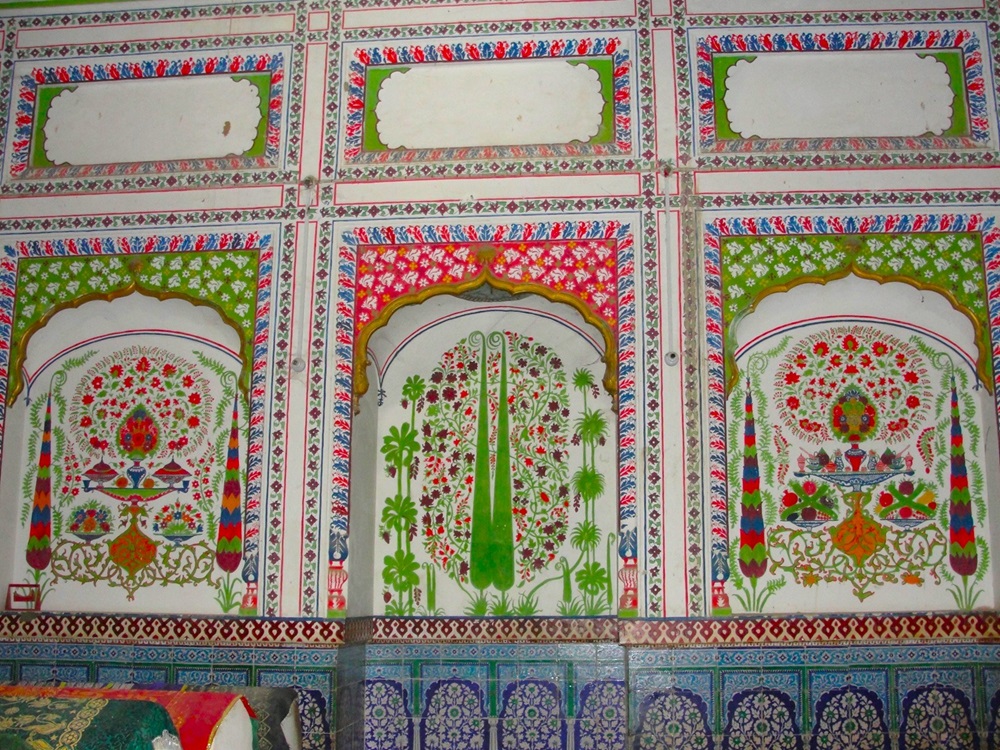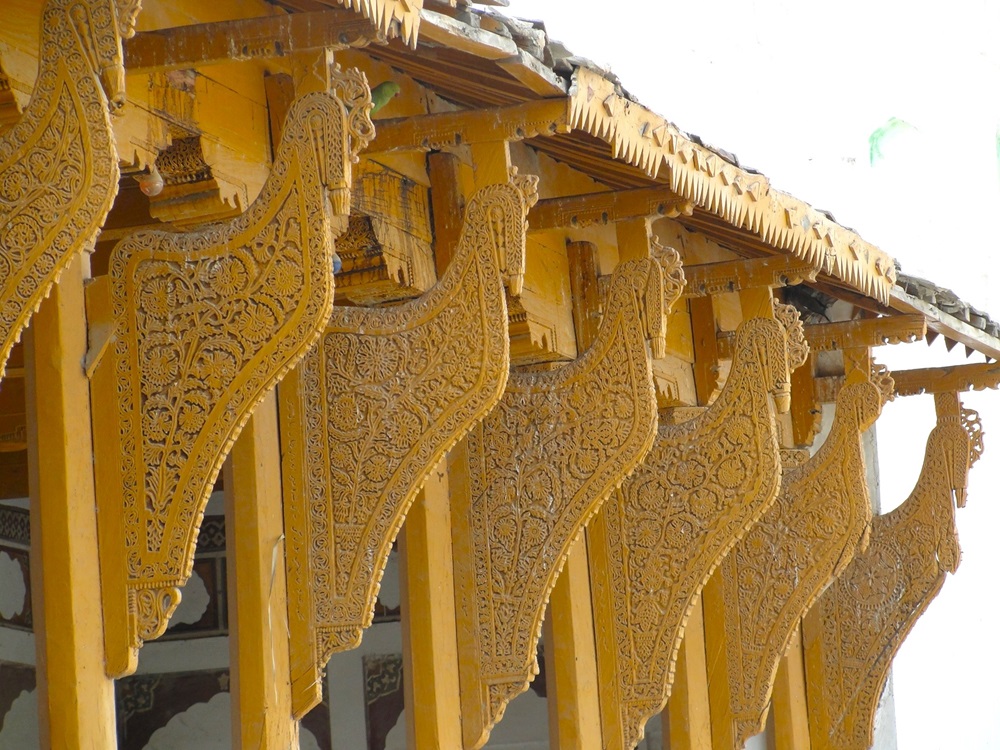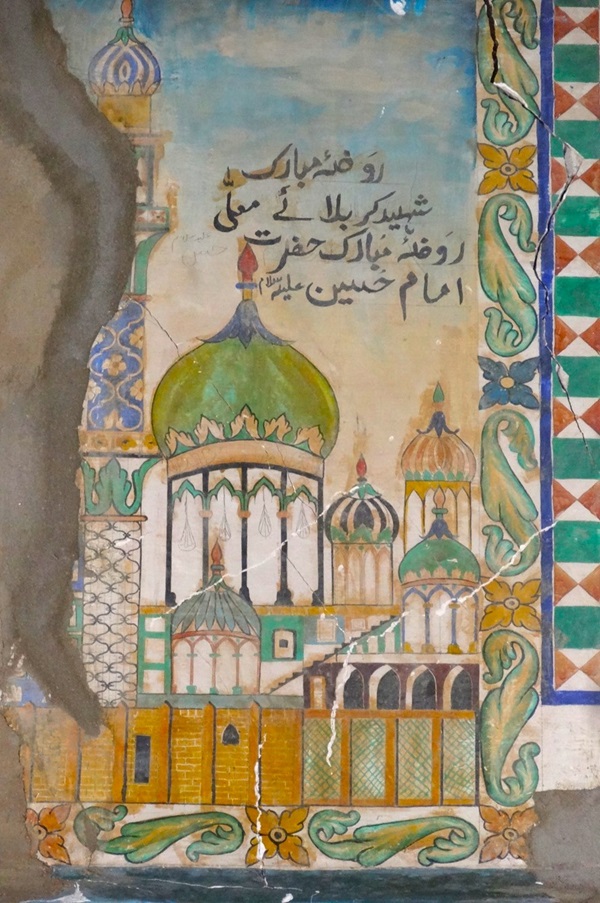Written by: Zulfiqar Ali Kalhoro
Posted on: May 09, 2024 |  | 中文
| 中文
Tombs of Suhrawardi Sufi saints of Bukera Sharif. (Picture credits to Zulfiqar Ali Kalhoro)
Bukera Sharif, a historical town situated approximately 8 km southwest of Tando Allahyar city, is famous for its Suhrawardi Sufi saints' shrines. Once a bustling hub of the Suhrawardiyya Silsila, this town is home to several shrines. The town boasts six historical tombs and four mosques, with three tombs and two mosques of Qureshi Suhrawardi Sufis nestled within the boundary wall. These structures reflect the town's rich historical and religious heritage. Two other tombs belonged to the disciples of Qureshi Suhrawardi saints of Bukera Sharif. The tomb of Shaikh Banho, who was from the Bhatti caste and was a deputy of one of the Gaddi Nashins of Shaikh Bahuddin Zakariya (d.1262), is also located in Bukera Sharif.
The shrines of Suhrawardi saints in the town bear witness to the socio-religious role that these saints played from the 17th to the 20th century in Sindh. Even during the present day, the descendants of these revered figures continue to wield spiritual and political power in the area. The devotees of the Suhrawardi saints gather at their shrines on annual festivals or other significant occasions. These Suhrawardi saints can trace their lineage back to Bahauddin Zakariya, a renowned Suhrawardi saint of the thirteenth century. The first person to migrate from Multan and settle in Sindh’s Bukera town was Pir Syed Fazil Shah Kalan. According to Tuhfat ul-Kiram by Mir Ali Sher Qani (1989), Pir Syed Fazil Shah Qureshi was a descendant of Shaikh Bahauddin Zakariya. He was among the earliest persons from the family of Shaikh Bahauddin Zakariya to preach and settle in Sindh. He had no sons, only daughters. He married one of his daughters to Makhdoom Shaikh Shahrullah Qureshi, who was his relative. Syed Ali Kacchi's Azkar Qalandari (1914) states information that Pir Syed Fazil Shah Qureshi, also known as Fazil Shah Kalan, died on 14th Rajab, 976/ January 12, 1569. He was known for his piety and was buried in an impressive tomb in Bukera Sharif. After his death, his son-in-law, Makhdoom Shahruhllah Shah, assumed the Gaddi Nahin of his dargah (shrine). He was also a learned scholar and saint who significantly spread Suhrawardiyya Silsila in Sindh. Many people became his disciples.

Painting in the tomb of Makhdoom Shahrullah at Bukera Sharif. (Picture credits to Zulfiqar Ali Kalhoro)
The tomb of Fazil Shah Kalan, a magnificent structure, stands as one of the largest in Bukera Sharif town. Its architectural beauty is enhanced by a square plan topped with a hemispherical dome. The octagonal interior is adorned with ceramic tiles and paintings. A wooden canopy is erected over his grave, and the tomb also contains several graves of his family members. Adjacent to this tomb is the tomb of Makhdoom Shahrullah Qureshi, which also houses several other graves. Makhdoom Shahrullah had three sons: Makhdoom Shah Sirajuddin, Makhdoom Shah Qaimuddin and Shamsuddin alias Saman Shah. After the death of Makhdoom Shahrullah, his eldest son, Makhdoom Shah Sirajuddin, became the Gaddi Nashin. He was also a learned person and known for his piousness. Makhdoom Shah Sirajuddin had two sons, Makhdoom Pir Fazil Shah, also known as Fazil Shah Godrio. After the death of Makhdoom Shah Sirajuddin, Makhdoom Fazil Shah Godrio became the Gaddi Nashin. Makhdoom Fazil Shah Godrio was a devoted preacher of the Suhrawardiyya Silsila and had many followers. He died without any sons to carry on his family line. The prominent dignitaries buried in the tomb of Makhdoom Fazil Shah Godrio include Makhdoom Shahrullah, Makhdoom Shah Sirajuddin, Makhdoom Pir Muhammad Shah, Makhdoom Pir Wilayat Shah, Makhdoom Pir Ziauddin and many others. It also contains the graves of females of the Qureshi family. The distinctive feature of this tomb is the blue tiles that decorate the dado and paintings. Several panels were made to paint floral designs, trees, stylized vases and fruit dishes. This is one of the most impressive tombs in terms of painted murals. One does not find such a beautifully painted tomb in any other nearby towns or villages. Paintings and ceramic tiles were two forms of decoration that one can see in most of the shrines in Sindh that were built in the 17th, 18th, 19th and 20th centuries.

Decorative brackets in a mosque north of the tomb of Makhdoom Qaimuddin Qalandar. (Picture credits to Zulfiqar Ali Kalhoro)
Makhdoom Fazil Shah Godrio was succeeded by his brother Makhdoom Mehar Shah, who played a significant role in preaching Suhrawardiyya Silsila. After his death, his son Makhdoom Qaimuddin Qalandar became the Gaddi Nashin. He was a noted Suhrawardi saint of the 18th century. Many people became his deputies and disciples. He died on 12 Sha’ban, 1215/ December 28, 1800. As per his will, Makhdoom Imam Bakhsh, son of Pir Sher Shah, became the Gaddi Nashin. His disciples always carried Makhdoom Imam Bakhsh in a palanquin (Doli/Palki). He was called Makhdoom Imam Bakhsh Palki Waro or Doli waro (one who rides in palanquin). The palanquin in which he travelled is placed in the tomb of Mian Faqir Hafiz at Makan Keti in Bukera Sharif. Mian Faqir Hafiz belonged to the Otho clan. On the facade of the tomb of Mian Faqir Hafiz is a Persian inscription that bears his date of death on 7th Ramadan 1278/ March 7, 1862. He was a mujawar (caretaker) of the shrine of Makhdoom Qaimuddin Qalandar and Makhddom Imam Bakhsh Palkiwaro. The tomb of Wahi Faqir, whose real name was Rahim Dino Arisar, who was a mujawar (caretaker) of the Dargah of Bukera Sharif, is also located near the shrine of Mian Hafiz Faqir.
Makhdoom Imam Bakhsh had a large following in lower Sindh. Many people enrolled themselves as his disciples. A few Talpur nobles of Rajo Khanani were his disciples. They were also followers of Makhdoom Qaimuddin Qalandar. A few graves of Talpur nobles are also located in the shrine complex of Fazil Shah. Makhdoom Imam Bakhsh died on 14 Jumada al-awwal, 1283/September 22, 1866, and was buried in the tomb of Makhdoom Qaimuddin Qalandar. Apart from the tombs of the Qureshi family of Shurawardi Sufi saints, there are also two mosques, one located south of the tomb of Pir Fazil Shah Kalan and another north of the tomb of Makhdoom Qaimuddin Qalandar. The southern mosque is believed to have been built by Pir Makhdoom Fazil Shah Kalan when he settled in Bukera Sharif. It was a simple mosque which was probably later renovated and expanded by the succeeding Gaddi Nashins. It is a three-domed structure. The northern mosque was built during the time of Makhdoom Imam Bakhsh Palkiwaro (d.1862). This mosque is noted for its painting, wooden ceilings, pillars and brackets. On two of the brackets is written the artisan's name, Muhammad Salih son of Parkhio, a resident of Mir Allahyar Talpur (Tando Allahyar) or a mosque builder. All the tombs and mosques feature paintings and woodwork. One cannot see such ornately carved wooden brackets and capitals of the pillars elsewhere in the Tando Allahyar district. Such refined decorative brackets are also seen in the wooden canopy located in front of Makhdoom Qaimuddin Qalandar's tomb and Mian Faqir Hafiz's tomb. There are numerous graves of deputies and disciples of Qureshi Suhrawardi saints found under the wooden structure. Apart from the mosque at Pir Fazil Shah shrine complex, two others are located in the heart of town. The first mosque is named after the builder Makhdoom Wilayat Shah. Makhdoom Wilyat Shah's haveli is also in front of the mosque. As per the inscription, the haveli was built in 1944. The Makhdoom Wilayat Shah Mosque is adorned with ceramic tiles. Both the exterior and ceilings of the verandah and main prayer hall are decorated with glazed tiles. Decorative pillars support the ceiling of the main prayer hall. The second mosque, known as Charag mosque, also called Darsan Wari Masjid, is also noted for its beautiful paintings and blue tiles. As per the inscription on the façade of the mosque, it was built in 1376 AH/1956 AD. The mason and kashigar was Osto Muhammad Hasan of Nasarpur town. The distinctive feature of the Charag mosque is the depiction of Roza Mubarak Hazrat Imam Hussain (AS) on the western wall of the mosque.

Painting of Roza Mubarak Hazrat Imam Hussain (AS) in Charag Mosque at Bukera Sharif. (Picture credits to Zulfiqar Ali Kalhoro)
Bukera Sharif also boasts the shrine of Shaikh Banho, who was initiated into the Suhrwardiyya order by one of the custodians of Shaikh Bahauddin Zakariya’s shrine. He was a non-Muslim who belonged to the Bhatti caste. His spiritual master converted him and gave him the new name Lutfullah Dars. He became famous as Shaikh Banho.
The shrines of the Suhrawardi saints of Bukera Sharif are pilgrimage sites for Muslims and Hindus, who throng the shrines on annual festivals, transcending religious boundaries.
The writer is an anthropologist. He has authored 15 books on Pakistan's cultural heritage and anthropology. He tweets @kalhorozulfiqar
You may also like: